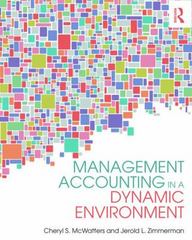Question
1.What is a performance obligation, and how is it used to determine when revenue should be recognized? 2.What are the five steps used to determine
1.What is a performance obligation, and how is it used to determine when revenue should be recognized?
2.What are the five steps used to determine the proper time to recognize revenue?
3.Selam Eatery operates a catering service specializing in business luncheons for large corporations. Selam requires customers to place their orders 2 weeks in advance of the scheduled events. Selam bills its customers on the tenth day of the month following the date of service and requires that payment be made within 30 days of the billing date. Conceptually, when should Selam recognize revenue related to its catering service?
4.The life of a business is divided into specific time periods, usually a year, to measure results of operations for each such time period and to portray financial conditions at the end of each period.
(a)This practice is based on the accounting assumption that the life of the business consists of a series of time periods and that it is possible to measure accurately the results of operations for each period. Comment on the validity and necessity of this assumption.
(b)What has been the effect of this practice on accounting? What is its relation to theaccrual basis of accounting? What influence has it had on accounting entries and practices?
5. For each item below, indicate to which category of elements of financial statements it belongs.
(a)Retained earnings. (e)Depreciation.(h)Dividends.
(b)Sales.(f)Loss on sale of equipment.(i)Gain on sale of investment.
(c)Share Premium.(g)Interest payable.(j)Issuance of ordinary shares.
(d)Inventory.
Step by Step Solution
There are 3 Steps involved in it
Step: 1

Get Instant Access to Expert-Tailored Solutions
See step-by-step solutions with expert insights and AI powered tools for academic success
Step: 2

Step: 3

Ace Your Homework with AI
Get the answers you need in no time with our AI-driven, step-by-step assistance
Get Started


